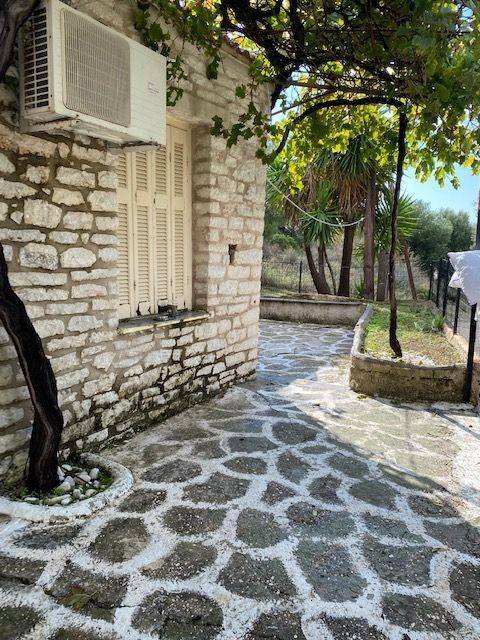1/13


Note
Listing updated on 09/28/2024
Description
This description has been translated automatically by Google Translate and may not be accurate
reference: EK-1902450
UNIQUE STONE HOUSE IN KALAMOS IN THE VILLAGE 400 METERS FROM THE SEA THE PLOT IS 261 SQ.M. AND IT CONSISTS OF TWO RESIDENCES, ONE OF STONE 64.26 SQM AND THE OTHER OF BRICKS 42 SQM UNIQUE ISLAND OF KALAMOS Kalamos (rarely Kalamos), (24,964 sq. km lat. 529, 2011),[1][2] is a small island in the Ionian Sea, very close to the western coast of Aetoloakarnania. The island is located directly opposite the village of Mytikas in Etoloakarnania, but despite its close distance it administratively belongs to the Prefecture of Lefkada along with other small islands in the area. It is mainly mountainous, in fact the top of the mountain that dominates the island reaches 745 m. Communication with the mainland is made by boats that run routes to and from Mytikas on the coast of Etoloakarnania. The island is famous for its beautiful beaches and many people visit it during the summer months. HISTORY The island became known in Orlovic from the raids launched from its shores by Lambros Katsonis in 1791. During the years of the Greek Revolution of 1821, the island was deserted. After the Battle of Peta (July 4, 1822) those who could not take refuge in Messolonghi landed in Kalamos, which was then under English rule. The then Commissioner Thomas Maitland considered the rebels undesirable and expelled them.[3] However, the first evidence of habitation on the island goes back to the Neolithic era. It is certain that Kalamos was also inhabited in the Mycenaean and Classical periods. Since the Hellenistic years, the passage of the Kalamos - Mytika strait acquires a special military importance and was initially supervised by a small fort built on the top of Xylokastro and a system of towers in the surrounding area. The supervision of the strait is better organized, when in the late Roman years a strong castle was built lower down, between the settlements of Kalamos and Episkopi. On the sidelines of conflicts, piracy was a permanent problem in the region, especially in times of loss of state control, such as during the fall of the Byzantine Empire, but also during the 16th and 18th centuries. In most of the 18th c. the Venetians dominate, while the economy of Kalamos is controlled by the Delladetsima family who collect the tithe tax. The Russians followed at the end of the century and in 1807 the island passed to the French. KOUVELIS THEODOROS REAL ESTATE OFFICE AGRINIO 6972396664--f5efe8f0b98ad4a4830cb93a3d615bf5!
Features
- Type
- Single-family detached house
- Contract
- Sale | Income property
- Floor
- Ground floor
- Surface
- 106 m²
- Rooms
- 3
- Bedrooms
- 2
- Bathrooms
- 1
Other features
- Fireplace
Price information
- Price
- € 140,000
- Price per m²
- 1,321 €/m²
Energy efficiency
Energy consumption
Η
Additional options











